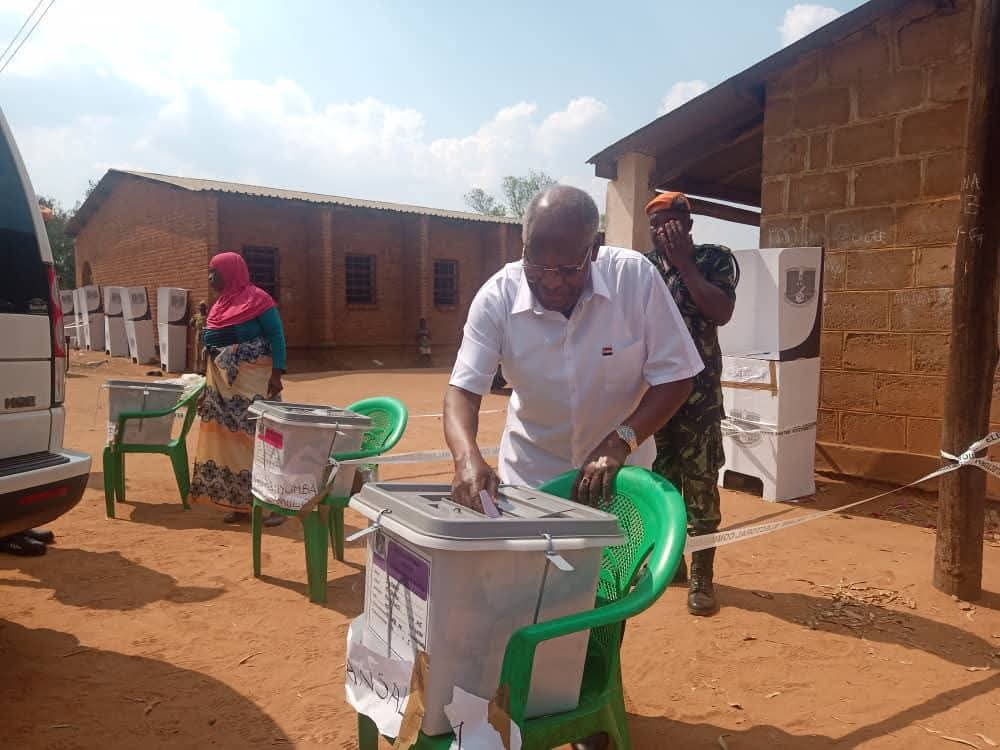By Burnett Munthali
As Malawi awaits the official results of the September 16, 2025, presidential election, early figures indicate notable voter participation across the country.
In the Northern Region, there are 895,310 registered voters.
Of these, 553,091 cast their ballots, representing a turnout of 63.71 percent.
The Central Region has 3,062,888 registered voters.
So far, 1,890,245 people have voted in the region, marking a turnout of 60.19 percent.
In the Eastern Region, there are 1,391,198 registered voters.
A total of 885,394 ballots have been cast, translating to a turnout of 63.5 percent.
The Southern Region has 1,853,994 registered voters.
In that region, 1,293,720 people voted, reflecting a turnout of 63.8 percent.
Early reports suggest that Arthur Peter Mutharika (APM) has swept the Southern, Eastern, and Northern regions.
In the Central Region, APM is also showing strong performance, particularly in districts such as Salima, Nkhotakota, Dedza, Mchinji, Kasungu, and Lilongwe City.
These early trends highlight the strategic significance of the Central Region, often regarded as a key battleground for presidential contests in Malawi.
Political analysts note that while regional sweeps provide an early indication of momentum, the final outcome will depend on the consolidation of votes from remaining polling stations and constituency tally centres.
Observers are closely monitoring turnout percentages and regional dynamics, as they often influence media narratives and public perceptions of electoral legitimacy.
The high voter turnout across the country underscores the active engagement of Malawians in shaping the political future of their nation.
Analytical perspective
These early results are likely to influence the overall presidential race, shaping party strategies and media coverage in real time.
APM’s strong performance in multiple regions may prompt opposition parties to reassess their campaign narratives, focusing on marginal districts where final outcomes could still shift.
Media outlets are expected to highlight these trends while exercising caution to avoid projecting premature conclusions, as doing so could affect public confidence in the electoral process.
Political analysts suggest that parties will likely deploy rapid response strategies to capitalize on favorable early trends or mitigate perceived losses, especially in key battleground constituencies.
Public perception of legitimacy remains sensitive at this stage, with voter confidence tied closely to transparent reporting and MEC’s adherence to established counting protocols.
Forward-looking panel
As Malawi awaits the full release of presidential results, attention now turns to the remaining polling stations and constituency tally centres.
The Malawi Electoral Commission (MEC) is expected to continue compiling and verifying results over the next 24 to 48 hours, ensuring accuracy before official announcements.
Voters, stakeholders, and political parties should anticipate periodic updates as batches of results are transmitted from constituency centres to district and national tally points.
Analysts note that margins in key battleground districts, particularly in the Central Region, could ultimately determine the final outcome, making these updates critical for both parties and citizens.
Observers urge all actors to exercise patience, while media outlets are expected to report cautiously, highlighting trends without speculating on final winners.
Ultimately, the next phase will involve consolidating verified constituency results into national figures, after which the MEC will officially declare the winner of the September 16, 2025, presidential election.
This careful, step-by-step process underscores the importance of transparency, accuracy, and public trust as Malawi concludes one of its most closely watched elections in recent history.




